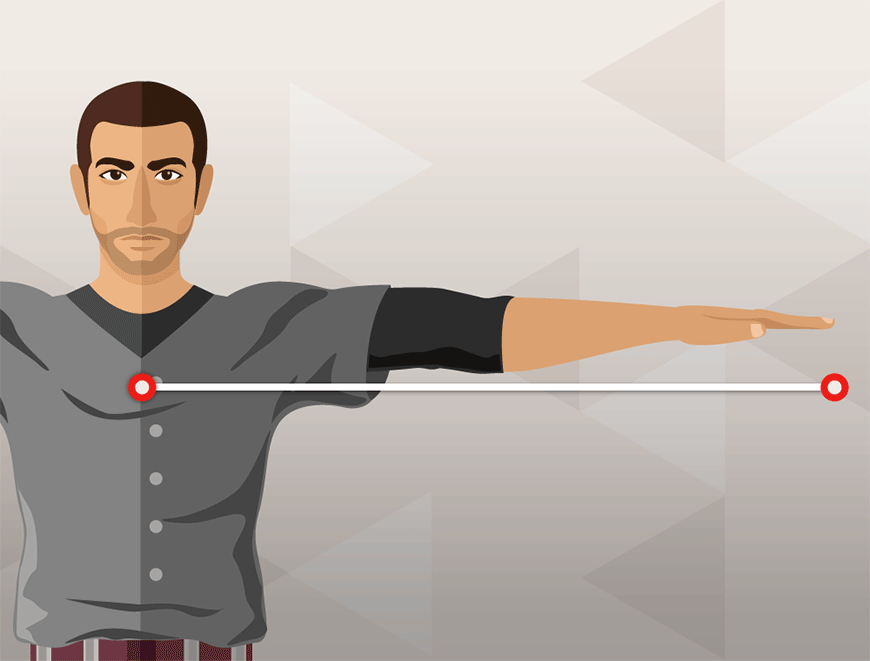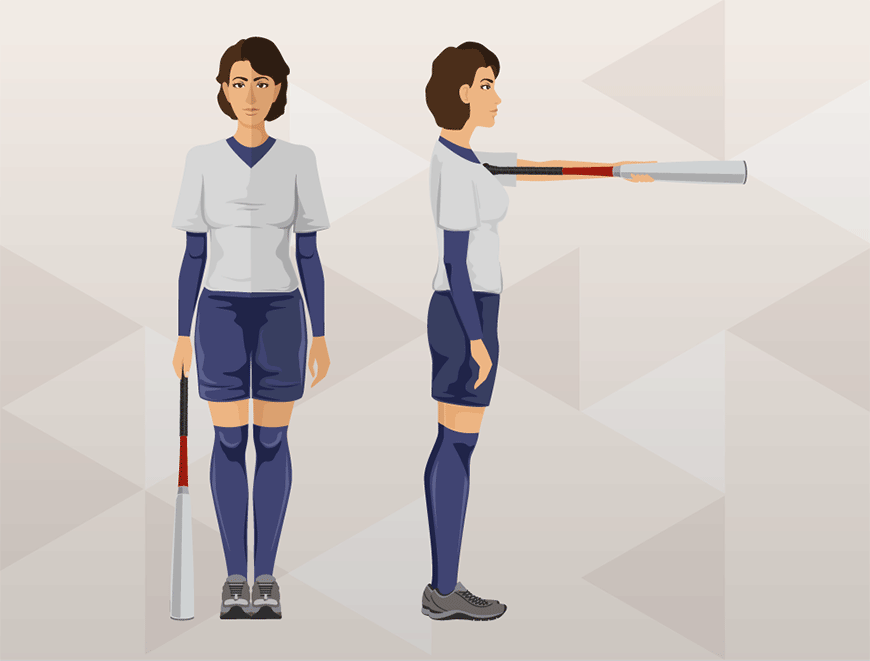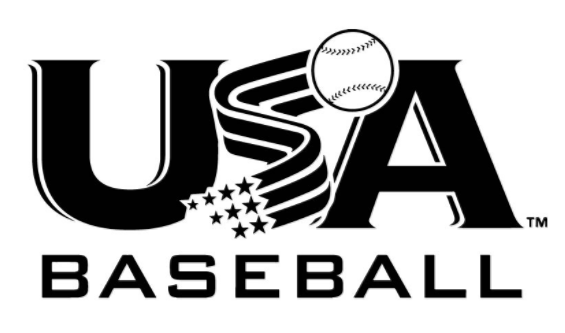
How to Choose a Bat
New technology has drastically changed the way baseball bats and softball bats have been produced over the last 20 years. Bats are no longer made of just aluminum, but can also be made of composite, which is known for being a material that the ball jumps off of. There are also strict regulations on what bats can be used depending on the age level of the player. Buying a new baseball or softball bat can be overwhelming for some, but with the following information, we’ll help make the entire process simpler. With this guide, you’ll learn about:
- Measuring Yourself for a Bat
- How to Measure Your Child for a Youth Bat
- Bat Sizing Charts by Age and League
- Bat Size Rules and Regulations
- Types and Materials of Bats
- Composite Bats vs. Alloy Bats vs. Hybrid Bats
Measuring Yourself for a Bat
Although there are many different ways to measure for the best baseball bat length, the best way is to choose what you feel comfortable swinging. A general rule to follow is never go up more than an inch at a time. This makes it easier to adjust to your new bat without drastically changing your swing. If you’re new to the game or want to re-size yourself, follow the steps below to learn how to properly measure yourself:
- Measure from the center of your chest to the tips of your index finger, making sure to have your arm straight out to your side:
- Put the bat to your side and as long as your palm reaches the handle, you have the right sized bat
- Put the knob of the bat at the center of your chest with the bat facing outward - if you can reach your arm out and grab the barrel of the bat, it’s the right size.

This measurement will tell you where you should be looking on the chart below:
| Weight/Height | 3'5"- 3'8" | 3'9" - 4' | 4'1"- 4'4" | 4'5"- 4'-8" | 4'9"- 5' | 5'1"- 5'-4" | 5'5"- 5'-8" | 5'9"- 6' | 6'1"- Over' |
| Under 60 lbs | 27" | 28" | 29" | 29" | |||||
| 61 - 70 lbs | 27" | 28" | 29" | 30" | 30" | ||||
| 71 - 80 lbs | 28" | 28" | 29" | 30" | 30" | 31" | |||
| 81 - 90 lbs | 28" | 29" | 29" | 30" | 30" | 31" | |||
| 91 - 100 lbs | 29" | 29" | 30" | 30" | 31" | 31" | 31" | ||
| 101 - 110 lbs | 29" | 29" | 30" | 30" | 31" | 31" | 32" | ||
| 111 - 120 lbs | 29" | 29" | 30" | 30" | 31" | 31" | 32" | ||
| 121 - 130 lbs | 30" | 30" | 30" | 31" | 32" | 32" | 33" | ||
| 131 - 140 lbs | 30" | 30" | 30" | 31" | 32" | 32" | 33" | 33" | |
| 141 - 150 lbs | 30" | 30" | 31" | 31" | 32" | 33" | 33" | 33" | |
| 151 - 160 lbs | 30" | 31" | 31" | 31" | 32" | 33" | 33" | 34" | |
| 161 - 170 lbs | 31" | 31" | 32" | 32" | 33" | 33" | 34" | ||
| 171 - 180 lbs | 31" | 32" | 32" | 33" | 34" | 34" | |||
| Over 180 lbs | 33" | 33" | 34" | 34" |
After you’ve selected the proper bat size to use by calculating all the numbers and referring to the bat length chart, there are some additional ways to determine whether or not it is the right size:

How to Measure Your Child for a Youth Bat
If you’re shopping for a bat for your kid, the process of measuring will be a little different. If your young player is between 3’ and 3’4”, start with a 26-inch bat and increase the bat size 1 inch for every 4-to-5 inches that they grow. The following steps are the ideal process for determining the correct youth bat size for children:
Choosing the Correct Length Youth Bat: Measure His/Her Height
Be sure you measure with his/her baseball cleats on. Stand a bat next to your child and compare him/her to the bat. The bat should reach, but not exceed, your child’s hip. If it reaches past his/her hip area, it’s going to be too long to swing.
Choosing the Correct Weight Youth Bat: Weigh Him/Her
Weight is a contributing factor to which bat he/she should swing because the little league bat size chart uses a combination of weight and height to determine the best bat choice. In general:
- Children under 60 pounds should swing a bat between 26 and 29 inches long
- Children weighing more than 70 pounds should swing a bat ranging from 28 to 32 inches long
What is Bat Drop?
Bat weight is measured by the minus or drop weight. Drop weight is the difference between the length and weight of the bat, so a bat that is 30 inches long and has a drop weight of -10 will weigh 20 ounces. The bigger the drop weight is, the lighter the bat will weigh.
Remember that only high school baseball bats and college baseball bats are regulated and must have a drop of no more than -3.
If you are a strong player, you may assume you want a heavier bat. This is not necessarily the case. You’ll want to swing a bat that still allows you to generate the ideal amount of bat speed through the zone. Finding this balance could be difficult at first, but once you do, you’ll be hitting the ball farther and harder than you could have imagined.
After finding a baseline for the length of the bat, it’s important to incorporate the length of the bat into deciding on the weight. For youth baseball and softball, the taller the child, the longer the bat should be. They may not be strong enough to use a heavier bat, so they would have a bat with a larger weight drop.
It’s important to choose the right balance between length and weight because it makes a difference in the physics of the swing. For instance, consider the following:
- If you have a long, light bat, you can swing it very fast, but it will not have much inertia behind it.
- If you swing a short, heavy bat, you will not have the fastest bat speed, but will have plenty of inertia.
Deciding on the length and weight of the bat you swing is a personal choice - you should try combining what is comfortable with what style of player you want to be. If you envision yourself being a contact player like Ichiro Suzuki, you won’t worry as much about losing inertia with your swing, but if you want to be a power hitter like Giancarlo Stanton and swing for the fences, you’ll want the inertia you would get from the shorter, heavier bat. You can refer to the chart below to give you a ballpark idea of what bat drop you should be using. Keep in mind that the chart below can be used to find bat drop for both baseball and softball bats and it can be used by both adult and youth players:
Bat Sizing Charts by Age and League
While the allowable drop weight varies between leagues, bat length is something that can be generalized by age group.
Youth Baseball Bat Sizing by Age
Below is a chart that breaks down youth baseball bat sizes by league and age. These are meant to be general guidelines to follow when sizing youth baseball bats. Your child’s actual measurements will dictate the specific size youth bat your kid needs.
| Age | Under 7 | 8-9 | 10-11 | 12-13 |
| Length | 24"-26" | 26"-29" | 28"-30" | 29"-32" |
| Drop | (-13.5)-(-12) | (-13.5)-(-10) | (-13)-(-10) | (-10)-(-9) |
| Age | Under 7 | 8-9 | 10-11 | 12-13 | 14 and Over |
| Length | 24"-26" | 26"-29" | 28"-30" | 29"-32" | 31"-34" |
| Drop | (-12)-(-10) | (-12)-(-10) | (-10)-(-8) | (-9)-(-5) | (-3) |
High School and College Bats Sizing by Age
The chart below breaks down baseball bat sizing by age for high school and college players. High school and college bats use the same sizing regulations.
| Age | 14-15 | 16-18 | 18 and Over |
| Length | 31"-33" | 32"-34" | 32"-34" |
| Drop | (-3) | (-3) | (-3) |
Fastpitch Softball Bat Sizing by Age
Lastly, we have a fastpitch softball bat sizing chart by age. As players get older, the bats get longer and heavier, with a lower bat drop (difference between length and weight).
| Age | Under 7 | 8-9 | 10-11 | 12-13 | 14 and Over |
| Length | 24"-26" | 26"-29" | 28"-31" | 29"-33" | 31"-34" |
| Drop | (-13.5)-(-10) | (-13.5)-(-10) | (-13)-(-8) | (-12)-(-8) | (-10)-(-8) |
Bat Size Rules and Regulations
Recent rule changes in most leagues have been adopted in an attempt to make the game safer and more competitive. For this reason, new safety standards have been issued to new bats and they are expected to be used by every player.
USA Baseball Bats

Big Barrel Bats for Pony Leagues
 USSSA did not adopt the new USA Baseball Bat rule change. The rules for USSSA bats have not changed and they will continue to use High school and college bats must all be BBCOR (Batted Ball Coefficient of Restitution) Certified. BCCOR baseball bats use an updated measurement standard that replaced the old BESR (Bat Exit Speed Ratio) Certification. Look for the stamp on the right indicating certification.
USSSA did not adopt the new USA Baseball Bat rule change. The rules for USSSA bats have not changed and they will continue to use High school and college bats must all be BBCOR (Batted Ball Coefficient of Restitution) Certified. BCCOR baseball bats use an updated measurement standard that replaced the old BESR (Bat Exit Speed Ratio) Certification. Look for the stamp on the right indicating certification.
This standard is designed to measure the trampoline effect of the bat and ball on impact, rather than just the exit speed of the ball. This makes BBCOR bats perform more like wood bats. High school and college bats should have a league-required -3 weight drop and can range in size from 31” to 34”.
Fastpitch and Slowpitch Softball Bats
 The league you play in will determine which bat regulations you should adhere to when purchasing a fastpitch or slowpitch softball bat. It is best to check your league before purchasing a bat since ASA bats are not allowed in USSSA play, and vice-versa, unless it contains a dual stamp.
The league you play in will determine which bat regulations you should adhere to when purchasing a fastpitch or slowpitch softball bat. It is best to check your league before purchasing a bat since ASA bats are not allowed in USSSA play, and vice-versa, unless it contains a dual stamp.
Types and Materials of Bats
Now that you know what length, weight, and league type you need for your new bat, it’s time to pick your material. Typically, there are 3 options at the amateur level:
- Composite Bats
- Hybrid Bats
- Alloy Bats
Composite Bats vs. Alloy Bats vs. Hybrid Bats
When it comes to choosing the material of your bat, it’s pretty easy to choose between wood and non-wood. With the exception of those states that mandate its use, wood is typically reserved for the professionals, practice bats and tournaments. But once you settle on a non-wood bat, choosing a bat material may feel overwhelming. You can use the chart below as a quick cheat sheet to remember the differences:

Deciding which type of bat is best for you can be a challenging task. Here are some tips on each type of bat to help you make the best decision for your budget and playing style.
Composite Bats
Composite bats are made out of a layered material similar to carbon fiber, which makes it easy to control the weight distribution of the bat. Manufacturers can make bats balanced (weight is evenly distributed) or end-loaded (the bat has more weight at the end of the barrel, giving it a heavier swing weight), depending on the style.
Pros of Composite Bats
- Reduced vibration to the hands, minimizing sting from a miss-hit ball.
- Tend to have a larger sweet spot and more ”pop”.
Cons of Composite Bats
- Often more expensive than alloy bats, since the manufacturing process is more complex.
- Using a composite in temperatures below 60 degrees will decrease performance and can cause cracking.
- Requires a break-in time. Remember that the pop won’t come until a composite bat is broken in. To break it in, follow these tips:
- Hit between 150-200 hits with a regular baseball or softball, not a rubber batting cage ball.
- Slightly rotate the bat each time you hit the ball, so you evenly break it in - this ensures your bat lasts a long time.
The above is the only recommended way to break in your composite bat. Methods such as hitting your bat against a tree or rolling it are not recommended and will damage the bat and void the manufacturer warranty. You can find more information by reading our step-by-step directions on how to break in a composite bat.
Alloy bats
Alloy bats, also called metal and aluminum bats, have been around longer than composite.
Pros of Alloy Bats
- Tend to be less expensive than composite bats.
- Do not require a break-in time, meaning they’re at their prime right out the wrapper.
- Often last longer and even when they get damaged, they typically dent, rather than crack. This means they can still be used once damaged, where as once it is cracked, a composite bat can’t be. As long as the bat is not damaged to the extent where a barrel ring can no longer fit around the barrel, the bat will still be considered legal.
Cons of Alloy Bats
- Tend to have a smaller sweet spot and less ”pop.”
A good rule of thumb is the more expensive the alloy, the longer the sweet spot is and the better balanced the bat will be.
If you like both alloy and composite, it’s possible to get a hybrid, or comp/alloy bat. Hybrid bats have a composite handle and an alloy barrel. The benefits of getting a hybrid bat are that you can get the composite handle, which reduces vibration, and the alloy barrel for the performance and cost savings.
Hybrid Bats
Hybrid bats combine a composite handle with alloy barrel materials into one baseball ball bat. This design combines the benefits a player gets from the light feel of a composite handle with the durability that an alloy barrel has.
Pros of Hybrid Bats
- Hybrid bats tend to have a lower price point than composite bats
- Lighter feel when swinging due to composite handle
- Like aluminum bats, hybrid bats are ready to use right away and require no breaking in
- Hybrid bats tend to be more durable than composite bats
Cons of Hybrid Bats
- Not legal in all leagues
- Handle is still susceptible to same cracking and temperature risks as composite bats
One-piece Bats vs. Two-piece Bats
- One Piece Bats: Typically stiffer and more balanced. The one piece design does not allow for more vibration control, so they will often have a lot of vibration on miss-hit balls.
- Two Piece Bats: Tend to have more flex and less vibration.
Generally speaking, contact hitters benefit from one piece bats for the better balance, and power hitters benefit more from the two piece bats for the added flex. The choice between the two is based on your personal preference and hitting style.
Know exactly the type of baseball or softball bat you need to get swinging? Come check out our selection of baseball bats and softball bats to get yourself or the young player in your life a brand new bat.
Still need help? Visit one of our retail store locations or call one of our service team members today!
